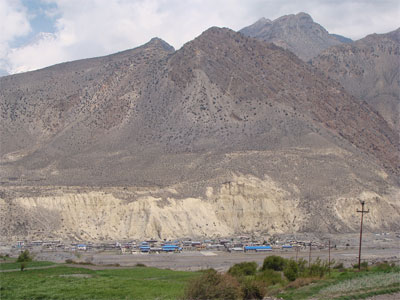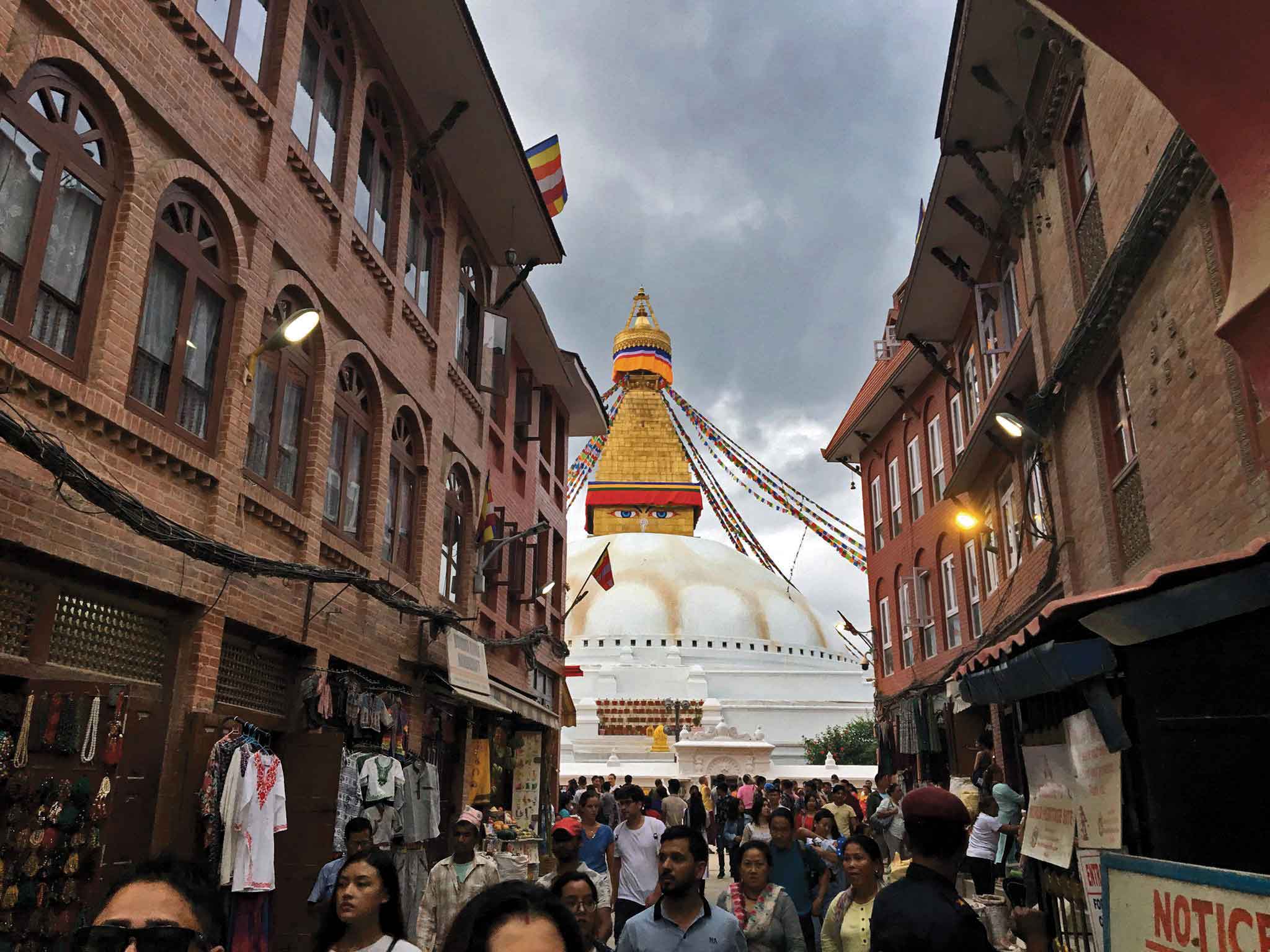Jomsom is a reminder of how close the far-away places have become.
The flight from Pokhara to Jomsom lasts 22 minutes. Within that time you go from the wettest place in Nepal to the rain shadow region. Seeing the towering Nilgiri on stepping out onto the Jomsom airstrip, you think you’ve arrived not from one place to another, but from one world to another. That is why you go in the first place, to be in a place that is years behind where you usually are. That is an illusion. Those of us who arrive expecting Jomsom as a place existing in a different time, a place where you will see many things for the first time soon realize how similar it is to where we have come from. Jomsom is built to cater to the needs of the visitor, not to feed his romanticism. ATMs, bakeries, and cafés give you the feel that you have not really left the city.
 And then there is the ceaseless coming and going of planes. The last of the planes comes around the time most offices open in the cities. After that the notorious strong wind comes to work. It is a necessary evil. A feel of calm and respite comes over the place as the plane turns into a speck and the droning dies away. An occasional tinkle of a yak’s bell or the sonorous bark of a Tibetan mastiff becomes audible. This is the romantic’s moment as he senses Jomsom returning to an older way of life. Huge white letters painted on a daunting cliff face to the town’s south beckon to spend time more recklessly: WELCOME FOR CLIMBING.
And then there is the ceaseless coming and going of planes. The last of the planes comes around the time most offices open in the cities. After that the notorious strong wind comes to work. It is a necessary evil. A feel of calm and respite comes over the place as the plane turns into a speck and the droning dies away. An occasional tinkle of a yak’s bell or the sonorous bark of a Tibetan mastiff becomes audible. This is the romantic’s moment as he senses Jomsom returning to an older way of life. Huge white letters painted on a daunting cliff face to the town’s south beckon to spend time more recklessly: WELCOME FOR CLIMBING.
The Nepali folk band Nepathaya had told us in their hit song ‘Jomsomay Bazaar Ma’ that the winds started blowing at noon. The winds start some two hours earlier than that. The band’s songwriter probably wrote the song while sitting out one of these bouts of winds in a café. A better, although less creative, way to escape the wind while still being outdoors is to cross over the Kali Gandaki to the old village of Thini.
Thini has survived the changes that Jomsom succumbed to. Girdled by a mud wall, it remains steeped in traditional Thakali culture. The houses are stone-and-mud structures. A common feature is the ground floor stable and apple trees in the courtyard. Behind the village stands the great bastion, Nilgiri, protecting the mud roofs from the rain-bearing clouds. Below, on the other side of the river, Jomsom lies, a reminder of what Thini could turn into some day.
Descending into Jomsom again, I passed several Indian pilgrims, identifiable from their woolen caps, on a bridge. Buses and jalopies waited for them on either side of the river. I thought Jomsom is (has been), in a way, a bridge between the arid world of Mustang and the other world behind the mountains. The main door of the airport almost opens out on the town’s main street. I wondered if Jomsom really was a destination. Maybe the wind blows to remind you to get going.









